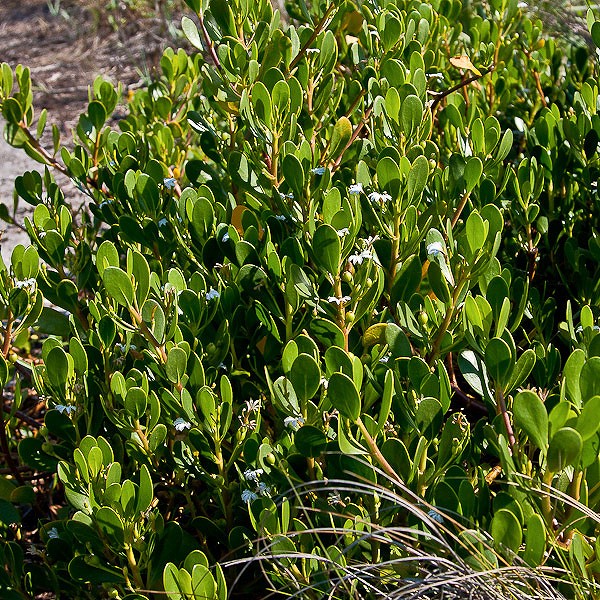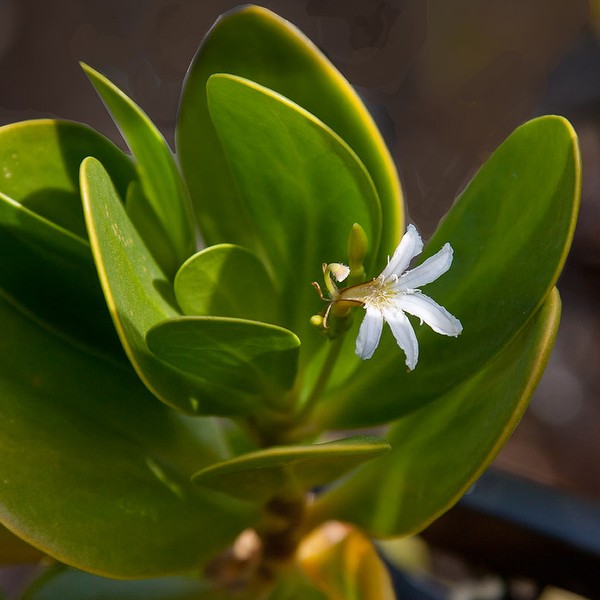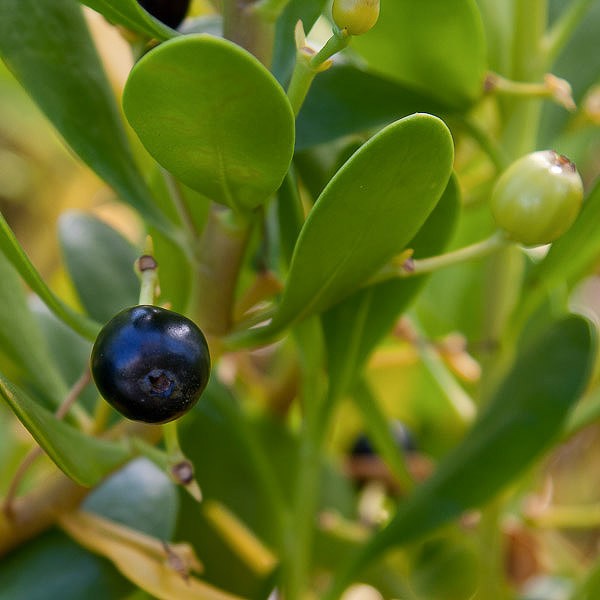Inkberry
Scaevola plumieri
Goodeniaceae
John and George traipsed the dunes on Hutchinson Island near Jensen Beach this overcast morning. All the beach and dune species were alive with fragrance and color: Baybean, Beach Sunflower, Coughbush (Ernodea), Railroad Vine, Sea Rocket, Spanish Bayonets, White Indigoberry perfumed like its cousin Gardenia, and more. One of the showier showoffs was Inkberry, Scaevola plumieri, a low sprawling shrub of low seaside dunes.
What’s it doing here!? The vast majority of the 90 species of Scaevola are Australian, with just two species dispersed widely. An Australian Scaevola encountered in Florida is the garden flower known as Fanflower, Scaevola aemula, and its hybrid derivatives. We’ll leave Fanflower and it cultivars to the garden blogs.
The two widely dispersed species are our own native Scaevola plumieri around the tropical Atlantic from Florida through the Caribbean to Africa, and into the Indian Ocean on Sri Lanka where it reappeared recently after decades of presumed extinction. The fleshy purple-black inky fruits seem to owe their transoceanic dispersal to flotation and to sea birds. The lopsided split flowers remind me of Lobelias.
The other widespread species, Scaevola sericea (aka S taccada), prefers the tropical Pacific, including Hawaii where it is native and important in landscaping. Scaevola taccada meets S. plumieri in the Indian Ocean.
And the two meet again in Florida where S. taccada (Beach Naupaka) is an invasive exotic escaped probably from landscaping. It fruits are white, as opposed to the black Inkberries, and its leaves are curled as opposed to the flat leaf blades in Inkberry Fruits of Beach Naupaka reportedly last at least a year in seawater.
How plants get their names is always fun to know, especially when rooted in drama. Scaevola flowers look like half is missing, as I might after removal of an arm. The original Scaevola (Latin left-handed) was a Roman originally named Gaius Mucius sentenced to death by the nasty Etruscan invaders around 600 BC. To show a little contempt of court, Gaius thrust his right hand impudently into flames. Ouch! And he went down in history as the world’s first famous southpaw.




